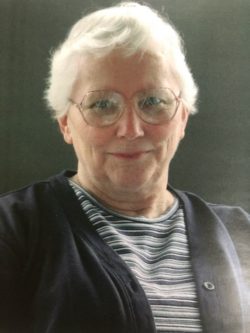Education
Rita grew up in northern Wisconsin where her father was a forest ranger, thus her early interest in nature. A course in freshwater algae at the University of Wisconsin, where she received her B.S. in 1956, sparked her interest in algae. A summer fellowship at the University of Minnesota led to the marine algae course at the University of Washington Friday Harbor Laboratories. After obtaining a M.S. on the ecology of a marine red alga at the University of Minnesota in 1958, then spending a year working in the Herbarium at the University of California, Berkeley, Rita returned to the Pacific Northwest to take a position in the School of Oceanography studying primary productivity and marine phytoplankton taxonomy and ecology with Dr. George Anderson and Dr. Robert Holmes of Scripps Institution, University of California. She obtained a Fulbright Fellowship to the University of Oslo, Norway, and the laboratory of Dr. Trygve Braarud with Grethe Hasle and Karen Gaarder, where she learned phytoplankton taxonomy and ecology. She returned to the University of Washington where she studied Arctic phytoplankton at the Naval Arctic Research Laboratory at Point Barrow, Alaska, forming the basis of her Ph.D. research under the supervision of Dr. Richard E. Norris in the Department of Botany.
Life and Career
Rita’s research interests have been in the ecology, morphology, and taxonomy of Arctic phytoplankton, ice algae, and benthic microalgae; sea ice, benthos, and water sampling techniques; distribution of phytoplankton in western Washington and Pacific Northwest waters; ecology and taxonomy of toxin-producing and other harmful phytoplankton; and causes of phytoplankton blooms.
A faculty position in 1969 at the Institute of Marine Science, University of Alaska, led to a research project on the ecology of sea ice algae with Dr. Vera Alexander. This pioneering work required the development of novel methods for collecting ice algae, phytoplankton and benthic microalgae samples under the ice using SCUBA. This research determined the taxonomy and productivity of phytoplankton and ice algae and helped determine the relative importance of ice algae in the Arctic environment, including whether ice algae were important components of spring phytoplankton blooms in the Arctic. Phytoplankton was also collected under the ice in many areas of the Chukchi and Beaufort seas in areas often accessed by flying in single-engine aircraft. Sampling was also done at Prudhoe Bay and vicinity during the early days of oil drilling in that area.
During this time in the Arctic, Rita was not only the first single woman to work at the Naval Arctic Research Lab, she was one of the first women to do research on the Navy’s drifting ice station T-3 (Fletcher’s Ice Island). She was also the first woman to do research on a U.S. Coast Guard icebreaker. From 1975-1981, Rita participated in the Outer Continental Shelf Environmental Assessment Program sponsored by the U.S. Minerals Management Service to provide background information on both terrestrial and marine environments in the Arctic before oil exploration. This involved icebreaker cruises in the Chukchi, Beaufort, and Bering Seas, often as Chief Scientist, to determine phytoplankton biomass and taxonomy. During these cruises, Rita was also responsible for zooplankton sampling and sample analysis. Results from these cruises are in the Environmental Assessment of the Alaskan Continental Shelf, Annual and Final Reports published by the Bureau of Land Management over the period 1975-1990. These cruises provided some of the early data on phytoplankton distribution and biomass and zooplankton species from offshore areas of the Arctic Ocean.
Rita was involved in a multi-investigator, Canadian and U.S., project in 1994 to determine new measurements of phytoplankton and ice algal production in the Arctic Ocean. With B.C. Booth, phytoplankton samples collected on the cruise from Alaska across the central Arctic Ocean to the North Pole were analyzed. These data showed the importance of diverse species with a wide range of sizes and will provide baseline data for future Arctic research.
Research strategy and mentoring
In the late 1980s, Rita began working on harmful algae, in particular, Alexandrium catenella, the main harmful species then known in the Pacific Northwest. This involved reviewing previous studies, participating in local, national and international workshops, giving talks on HABs, and teaching workshops on phytoplankton identification at various locations, but especially in the U.S. western states. Most of the early information on PSP came from toxin measured in shellfish by the Washington Department of Health. However, an early unpublished study in the 1980s by Nishitani and Chew found that motile cells, cysts or toxins in shellfish were present throughout Puget Sound. This information led to an extensive survey by Rita and colleagues to determine present-day populations of Alexandrium cysts in surface sediments, and the historical cyst record using 210Pb aging in sediment cores. Cysts were most abundant in northern and central areas, especially in Quartermaster Harbor where cysts dated to 1955 in the deepest part of the core, suggesting the possible historical presence of PSP for at least 50 years.
In 1991 when domoic acid first occurred on the West Coast and particularly in the Pacific Northwest, Rita organized and was involved in the first meetings of local scientists to discuss the problem and look for solutions. Her paper, with D.L. Garrison and F.G. Plumley in 1997, provided the necessary background information for many West Coast research projects on HABs. After the first outbreak of Amnesic Shellfish Poisoning (ASP) in Washington State waters in 1991, Rita began monitoring for the causative alga, Pseudo-nitzschia spp. Rita was one of the co-organizers and lead taxonomist when the Olympic Region Harmful Algal Bloom (ORHAB) project began in 2000. This project was developed to sample and monitor phytoplankton and domoic acid on the Washington Pacific coast to provide early warning of domoic acid in razor clams and Dungeness crabs to government agencies, tribes, and the general public and is still in operation. A similar project, Sound Toxins, was started in inland waters of Washington in 2008 with Rita providing taxonomic advice to participants.
Rita also worked with investigators at the University of Washington and local fish growers on the effects of phytoplankton blooms and salmon aquaculture in Puget Sound. The diatoms Chaetoceros convolutus and C. concavicornis and the raphidophyte, Heterosigma akashiwo, when present, sometimes in high concentrations, are known to kill fish, both wild and in net pens, and cause severe economic losses to the growers.
Rita’s book, A Taxonomic Guide To Some Common Marine Phytoplankton, published in 2002, was written as a general taxonomic guide and not specifically for HAB species. It has been used by many prospective phytoplankton researchers, both in the U.S. and elsewhere.
Rita has mentored: G.E.M. Matheke, K.O. Coyle, S.E. Hinds, A. M. Cox, K.M. Feifel, E.D. Tobin
10 Selected Publications
Lewitus, A.J., Horner, R.A., Caron, D.A., Garcia-Mendoza, E., Hickey, B.M., Hunter, M., Huppert, D.D., Kudela, R.M., Langlois, G.W., Largier, J.L., Lessard, E.J., RaLonde, R., Rensel, J.E. Jack, Strutton, P.G., Trainer, V.L., Tweddle, J.F. 2012. Harmful algal blooms along the North American west coast region: History, trends, causes, impacts. Harmful Algae 19:133-159.
Feifel, K., Moore, S., Horner, R. 2012. An Alexandrium sp. cyst record from Sequim Bay, Washington State, and it’s relation to past climate variability. J. Phycol. 48:550-558.
Horner, R.A., Greengrove, C.L., Postel, J.R., Gawel, J.E., Davies-Vollum, K.S., Cox, A.M. 2011. Spatial distribution of benthic cysts of Alexandrium catenella in surface sediments of Puget Sound, Washington, USA. Harmful Algae 11:96-105.
Horner, R.A. 2003. Identification of some Pseudo-nitzschia species from western Washington waters. In: Bates, S.S., ed., Proceedings Eighth Canadian Workshop on Harmful Marine Algae. Can. Tech. Rep. Fish. Aquat. Sci. 2498:77-79.
Horner, R.A., Hickey, B.M., Postel, J.R. 2000. Pseudo-nitzschia blooms and physical oceanography off Washington State, USA. S. Afr. J. Mar. Sci. 22:299-308.
Bates, S.S., Garrison, D.L., Horner, R.A. 1998. Bloom dynamics and physiology of domoic-acid-producing Pseudo-nitzschia species. In: D.M. Anderson, A.D. Cembella, G.M. Hallegraeff, eds. Physiological Ecology of Harmful Algal Blooms. NATO ASI series, Series G, Ecological sciences; 41:267-292. Springer-Verlag, Berlin, FRG.
Horner, R.A., Garrison, D.L., Plumley, F.G. 1997. Harmful algal blooms and red tide problems on the U.S. west coast. Limnol. Oceanogr. 42:1076-1088.
Taylor, F.J.R., Horner, R.A. 1994. Red tides and other problems with harmful algal blooms in Pacific Northwest coastal waters. In: R.C.H. Wilson, R.J. Beamish, F. Aitkins, J.Bell, eds., Review of the marine environment and biota of Strait of Georgia, Puget Sound and Juan de Fuca Strait. Proceedings of the BC/Washington Symposium on the Marine Environment, Jan. 13 & 14, 1994. Can. Tech. Rep. Fish. Aquat. Sci. 1948:175-186.
Horner, R.A., Postel, J.R. 1993. Toxic diatoms in western Washington waters (U.S. west coast). Hydrobiologia 269/270:197-205.
Horner, R.A., Kusske, M.B., Moynihan, B.P., Skinner, R.N., Wekell, J.C. 1993. Retention of domoic acid by razor clams (Siliqua patula Dixon): preliminary study. J. Shellfish Res. 12:451-456.
___
Prepared by Brian Bill and Vera Trainer with Rita’s help.

